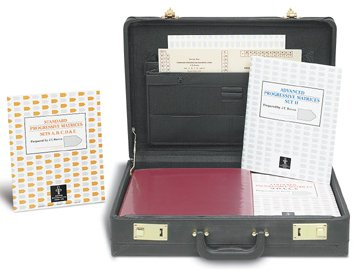Raven’s Progressive Matrices | |
 | |

Raven’s Progressive Matrices
by J. C. Raven
Raven’s Progressive Matrices provide a trusted, nonverbal assessment of intelligence. Because these scales minimize the impact of language skills and cultural bias, they are particularly well suited to measuring the intelligence of individuals with reading problems or hearing impairment, as well as those whose native language is not English.
Appropriate for both children and adults, Raven’s Progressive Matrices measure two complementary components of general intelligence: the capacity to think clearly and make sense of complex data (eductive ability); and the capacity to store and reproduce information (reproductive ability).
The test offers three progressively more difficult forms intended for different populations. Items on all forms ask the examinee to identify the missing component in a series of figural patterns. Grouped in sets, the items require increasingly greater skill in encoding and analyzing information.
The three forms are summarized below:
Coloured Progressed Matrices (CPM)
For use with: Children 5 through 11 years of age; elderly people; and individuals of any age who are mentally impaired
Number of items: 36 items in 3 sets of 12
Administration time: 15 to 30 minutes
Applications: Easiest of the three forms, the CPM is used to assess the degree to which examinees can think clearly or, in the case of older or impaired individuals, the extent to which their intellectual abilities have deteriorated. It measures cognitive processes typically used by children under 11 years of age–processes that are among the first to decline as the result of organic dysfunction.
Standard Progressive Matrices (SPM)
For use with: Children and teens, 6 through 16 years of age. A more difficult version, the SPM-Plus, can be used with older adolescents and adults or those who score near the ceiling of the standard SPM.
Number of items: 60 items in 5 sets of 12
Administration time: 40 to 45 minutes
Applications: The most widely used of the three Raven’s forms, the SPM was designed to assess nonverbal reasoning in the general population. In educational settings, it is used as a language-free measure of intelligence. In organizational settings, it is used to determine potential for success in technical or mid-level management positions.
Advanced Progressive Matrices
For use with: Individuals 12 years and up whose intellectual ability is above average
Number of items: 12 practice items and 36 test items
Administration time: 40 to 60 minutes
Applications: The most difficult of the three versions, the APM can be used for advanced educational and professional placement. When administered under timed conditions, the APM can also be used to assess intellectual efficiency–the speed and accuracy of high-level cognitive work.
Each of the three forms can be group or individually administered, and each produces a single raw score, which can be converted to a percentile or a standard score. Parallel forms are available for the CPM, SPM, and SPM-Plus.
The instrument of choice in cross-cultural studies of intelligence, Raven’s Progressive Matrices have long been used to measure cognitive ability free of verbal interference. The scales are particularly helpful in assessing ethnically diverse populations, and they are among the few intelligence tests that detect “sub-optimal performance,” also known as “faking bad.”
Component
SET: Includes 4 Reusable Design Booklets, one each for the Coloured and Standard Progressive Matrices (PC-1A and PC-2A) and one each for Sets I and II of the Advanced Progressive Matrices (PC-3A and PC-3B); 4 Manuals-Section 1 (General Overview) plus Sections 2, 3, and 4, for the Coloured, Standard, and Advanced Progressive Matrices; 1 Manual Research Supplement No. 3; Scoring Keys for all 3 Forms; 100 All-Forms Answer Sheets. (Does not include components for the SPM-Plus.)


